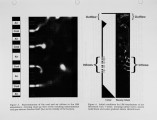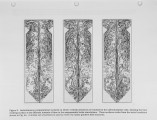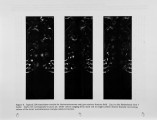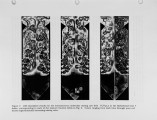| OCR Text |
Show the 714-ft elevation for various boiler loads. At full (140 M W ) load, these tests showed somewhat lower NOx removal than was predicted by the modeling and than has been seen in previous FLGR field experience, and showed significantly higher C O emissions as well. Results demonstrated 3 4% NOx reduction from the original baseline level when operating at 7 % natural gas heat input, lowering the NOx emissions to 0.29 lb/MMBtu. Tests were performed with as few as four injectors, and with various combinations of between four and eight injectors. The NOx reduction using 7 % gas input did not vary significantly using different numbers of injectors or combinations of injectors. However CO emissions did depend strongly on which injectors were in service. In general C O emissions at full load increased sharply when the gas heat input exceeded 4 % to 5%; at 7 % gas heat input CO emissions corrected to 3 % excess 0 2 averaged slightly more than 1000 ppm. These CO levels were significantly higher than had been predicted by the modeling on which the design was based, and were also much higher than had been experienced during other FLGR demonstrations. At 90 MW load, results showed NOx reductions of 40% at 7% gas heat input using all eight injectors, lowering the emissions to 0.26 lb/MMBtu. A sharp rise in CO emissions again occurred at high gas input rates, though at this load the increase did not occur until 5 % to 6% gas heat input. At 65 M W load, 4 2 % NOx reduction was achieved for 6% gas heat input using all eight injectors, with emissions dropping to 0.23 lb/MMBtu. COemissions at 6% gas input averaged about 500 ppm, but were still well above the predicted results or results from other FLGR demonstration sites. 5.2 Analyses of initial test results While many of the trends above are in agreement with the modeling results, the initial tests all showed somewhat lower NOx removal than was predicted by the modeling and by previous FLGR field experience, and showed significantly higher 00 emissions than predicted by the models or by prior experience. Analyses of the initial test results showed that certain of the injectors were responsible for a highly disproportionate share of the C O emissions. These indicated that gas was being injected directly into the coal-rich core in which coal burnout takes place. This would lead to increased COemissions from incomplete burnout of the coal, as well as poorer NOx reductions due to the interaction with oxygen required for coal burnout. ESA's testing also showed that increased LOI and opacity levels were associated with the high C O emissions. These observations, together with the inherent principle of operation of the CCOFA system on the unit, suggested that natural gas injection by the FLGR system was disturbing the coal burnout process. Because Riverbend Unit 7 is equipped with low NOx burners and close-coupled overfire air, a portion of the coal combustion is delayed as a result of the addition of overfire air. When natural gas is injected into the upper furnace, it consumes oxygen required for the coal burnout process. The increased COemissions and LOI are thus due to incomplete coal burnout, rather than due to unreacted natural gas from the FLGR system. The simulations, which only modeled gas-phase mixing and combustion, do not address the coal burnout process and thus predict the CO emissions due to carbon from the natural gas only. |




























